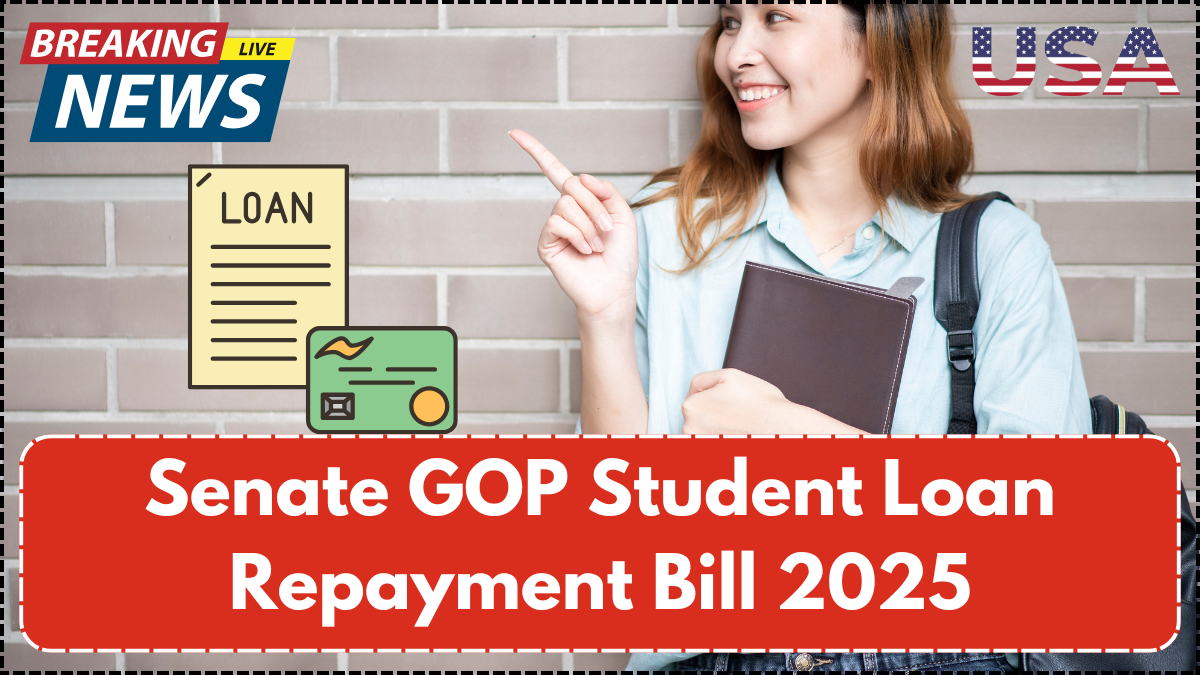The Senate GOP Student Loan Repayment Bill 2025 introduces a sweeping shift in how student debt is handled in the United States. Proposed in early 2025, this legislation aims to overhaul the current federal loan system with a focus on cost containment and borrower accountability. Unlike past relief measures, the bill emphasizes fiscal responsibility while attempting to simplify repayment options.
This bill is not a forgiveness program but rather a structural reform. It seeks to reduce future debt burdens through tighter loan limits and revamped repayment plans. Supporters argue it targets long-term sustainability, while critics warn it may restrict access to higher education for lower-income students.

What’s Changing? Key Features at a Glance
Here’s a snapshot of the proposed changes under the Senate GOP Student Loan Repayment Bill 2025:
| Provision | Description |
|---|---|
| Loan Caps | Sets strict annual and lifetime borrowing limits by degree type. |
| IDR Overhaul | Replaces current Income-Driven Repayment plans with a simplified model. |
| Repayment Relief Bill Provisions | Offers capped monthly payments tied to income, but with shorter terms. |
| Elimination of PSLF | Public Service Loan Forgiveness program phased out for new borrowers. |
| Interest Accrual Limits | Interest stops accruing after 10 years of regular payments. |
How Loan Caps Will Impact New Borrowers
One of the most debated aspects of the bill is the loan caps. Undergraduate borrowers would face an annual borrowing ceiling of $12,000, with a lifetime max of $56,000. Graduate students would have stricter caps, reflecting a push to curb high-balance professional school loans. The bill assumes that tighter caps will pressure colleges to control tuition costs. However, this could also mean students may need to seek alternative funding or attend less expensive institutions.
Private lenders may see a rise in demand, which introduces concerns about interest rates and borrower protections in the non-federal loan market. The caps signal a philosophical shift—higher education is no longer viewed as a blank-check investment by the federal government.
IDR Overhaul: Simplification with Trade-Offs
The bill proposes a major IDR overhaul, replacing the existing maze of repayment plans with a single streamlined version. Borrowers would pay 10% of discretionary income for up to 15 years (undergrad loans) or 20 years (grad loans). Any remaining balance after this term would be forgiven. However, this forgiveness would be taxed as income—a notable change from current law.
Borrowers with low income may benefit from smaller monthly payments, but the shorter maximum terms could increase overall monthly obligations for mid- to high-income borrowers. It’s a cleaner system, but not necessarily easier on everyone’s wallet.
Repayment Relief Bill: A Middle-Ground Strategy
The repayment relief bill component tries to soften the blow by ensuring that no borrower pays more than 15% of their monthly income. It also removes interest accumulation after a decade of consistent payments, which could be a relief for long-term borrowers struggling to reduce principal.
However, the bill eliminates the Public Service Loan Forgiveness (PSLF) program for new borrowers after July 1, 2025. This is a controversial move, especially among educators and public sector workers who rely on the program as an incentive.
Who Gains and Who Loses?
The Senate GOP Student Loan Repayment Bill 2025 is positioned as a long-term cost-saving measure. New borrowers in high-income brackets could benefit from the clarity and loan forgiveness timeline. However, middle- and low-income borrowers may face more financial hurdles up front due to reduced federal aid availability.
For families relying on federal loans to bridge college costs, the elimination of expansive forgiveness options and tighter borrowing limits may necessitate lifestyle or career path adjustments.
FAQs
What happens to borrowers currently enrolled in IDR plans?
Borrowers already in existing IDR plans can remain unless they opt into the new plan. However, no new borrowers will be allowed to enroll in the older plans after July 1, 2025.
Will current students be affected by the new loan caps?
Only new loans disbursed after January 1, 2026, will be subject to the new caps. Current students can continue borrowing under the existing limits until then.
Is loan forgiveness still possible under this bill?
Yes, but only through the restructured IDR system. Forgiveness would be available after 15 or 20 years of repayment and would be considered taxable income.
What is the future of Public Service Loan Forgiveness?
PSLF will no longer be available to new borrowers starting July 1, 2025. Those currently enrolled and meeting requirements will be grandfathered in.
Will this bill pass into law?
As of June 2025, the bill is under debate in the Senate. It has strong Republican backing but faces resistance from Democrats and advocacy groups. Amendments or compromises may be introduced before any final vote.
Click here to learn more
Shubhrata is a skilled content writer with a passion for crafting compelling and engaging narratives. With a deep understanding of audience needs, he creates content that informs, inspires, and connects. Whether it’s blog posts, articles, or marketing copy, he brings creativity and clarity to every piece. His expertise helps our brand communicate effectively and leave a lasting impact.



